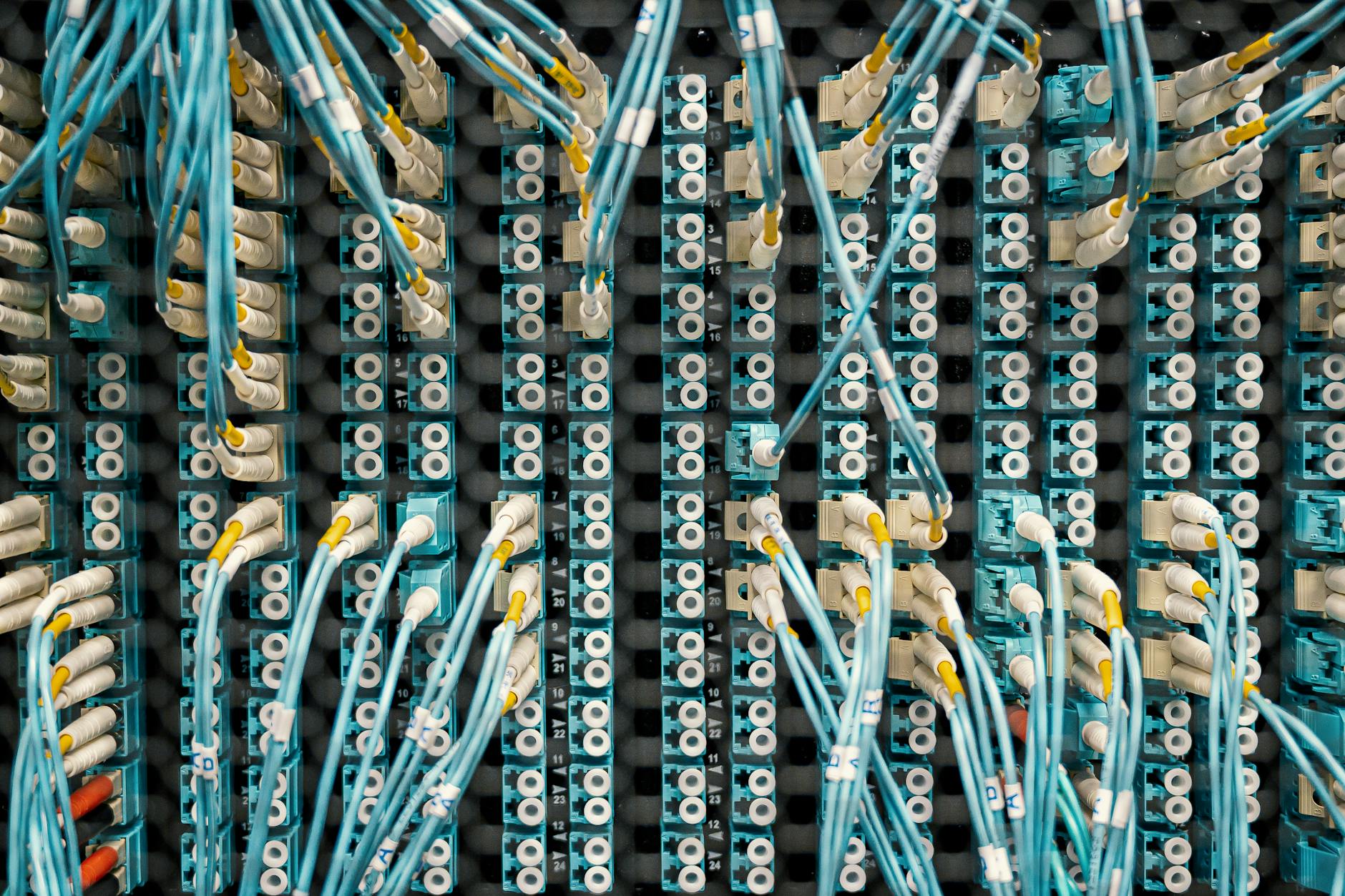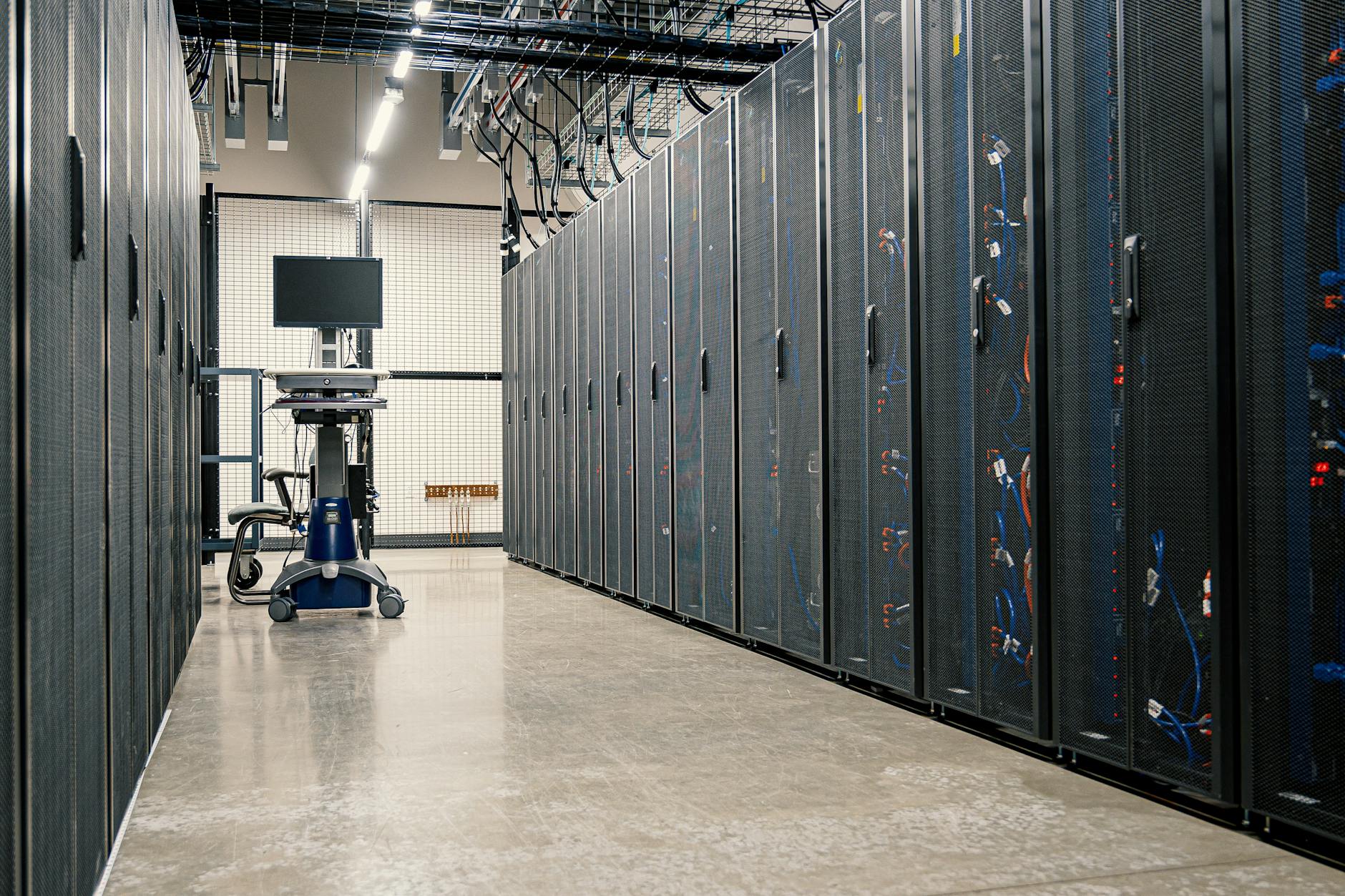Unlocking the Web: Your Ultimate Guide to Internet Service Options in USA
Internet Service Options in the USA
Picking an internet service in the USA? Yeah, it can make your head spin. But don’t worry, let’s simplify it so you can choose what works for you without feeling lost.
Broadband Accessibility in the US
Internet access isn’t the same for everyone. According to BroadbandNow, back in 2018, about 25 million folks in the US couldn’t get broadband that topped 25 Mbps. On top of that, another 14 million didn’t have a solid home internet service, even when you throw wireless options into the mix, like satellite.
| Info | Stats |
|---|---|
| Americans without 25 Mbps Access | 25 million |
| Americans without Good Home Internet | 14 million |
Different technologies deliver broadband—like cable, DSL, fiber, and satellite. But not everyone gets the same shot at it, with rural areas often left out in the cold. Efforts are ongoing with government pushes and business expansions to fix this. Curious about who’s providing service out there? Check out broadband providers in United States.
Connectivity Options Are Changing
How we get online is changing fast. Cable internet, riding on cable TV lines, is a big player. It’s fast, and people love it (Xfinity).
Satellite internet is a lifesaver where traditional broadband doesn’t reach. It’s like wireless, but a bit different and runs through antennas including modems (Xfinity).
Here’s the lowdown on different connection types:
| Type | Good Stuff | Not-so-Good Stuff |
|---|---|---|
| Cable | Fast; available almost everywhere | Can slow down as more people jump on |
| DSL | Uses phone lines; decent for mid-range speeds | Not as fast as cable or fiber; slower with distance from the provider |
| Fiber | Super-fast; dependable | Hard to find; costs more |
| Satellite | Available in out-of-the-way spots; easy to set up | Sluggish response times; weather can mess with it; has limits on data |
When it’s time to pick, think about where you live, what you’ll use it for, and each type’s strong and weak points. You may want to look at high-speed internet providers in USA to see what best suits you.
Getting to grips with the current broadband picture and what’s out there helps you choose the best internet service for you. Be it satellite, cable, or fiber optic, mull over these aspects before you jump in. For more on who’s offering what, pop over to fiber optic internet providers near me.
Satellite Internet Providers
Let’s chat about satellite internet in the USA. The big players? Hughesnet and Viasat. Let’s break it down and see what they bring to the table.
Hughesnet Overview
Hughesnet is your go-to for satellite internet, spicing up connections across the whole USA—yep, all 50 states, serving a whopping 308.7 million folks. They’ve stepped up their game with their fancy “Gen 5” satellite tech, cranking download speeds up to 25 Mbps. That’s a sweet deal for anyone living where cables and traditional lines fear to tread.
| Feature | Hughesnet |
|---|---|
| Coverage | 50 States |
| Reach | 308.7 million |
| Download Speed | 25 Mbps |
| Technology | Gen 5 Satellite |
Need more speedy internet ideas? Check out our high-speed internet providers in the USA.
Viasat Services Comparison
Viasat rolls in as the second major satellite internet provider, offering services in every nook and cranny of the USA, covering about 308.5 million folks (BroadbandNow). What makes Viasat a standout is its flexible download speeds, ranging from 12 to 100 Mbps based on where you’re chilling and your plan of choice. That’s a big deal for folks stuck in the boonies with zero wired broadband love.
| Feature | Viasat |
|---|---|
| Coverage | 50 States |
| Reach | 308.5 million |
| Download Speed | 12-100 Mbps |
| Focus Areas | Rural Areas |
Want to mix and match? Peek at our wireless internet plans comparison.
Both Hughesnet and Viasat are lifesavers, especially when you’re living where the wired world forgets to reach. Make sure you figure out what suits your crib best. For broader choices, scope out fiber optic internet providers near me and other broadband providers in the United States.
Knowing your satellite options means American internet surfers can snag the best fit for their lives.
Wired Internet Options
So, you’re on the hunt for a solid internet connection in the USA, huh? Alright, let’s talk wired connections. These bad boys give you stable speeds and performance that’s as consistent as your morning coffee. Today, I’ll give you the lowdown on two top dogs: EarthLink and XFINITY from Comcast.
EarthLink Offerings
EarthLink’s got their game face on, available in 36 states. If you’re looking for DSL, they’ve got the largest coverage with about 174.4 million people connected to their service. And for fiber, they’re no slouch either, sitting at number two with coverage touching 26.5 million folks. (Yeah, BroadbandNow backs me up on this one.)
EarthLink Internet Plans:
| Plan Type | Speed | Coverage | Data Cap |
|---|---|---|---|
| DSL | 12 – 50 Mbps | 36 states | Nada |
| Fiber | 100 – 1000 Mbps | Big city vibes | Nada |
EarthLink’s your go-to if ya need fiber optic internet nearby or just plain ol’ DSL. And they’re good at helping you navigate high-speed internet choices in the USA.
XFINITY from Comcast Features
XFINITY’s like that popular kid in school, running as the largest cable internet provider in 39 states. California, Florida, and Illinois are definitely feeling the love. They offer a full menu of internet, TV, and phone services, making them a one-stop-shop for your home needs (shoutout to BroadbandNow for the stats).
XFINITY Internet Plans:
| Plan | Speed (Mbps) | What It Can Do for You |
|---|---|---|
| Performance Starter | 50 | Just right for browsing the web |
| Performance Pro | 200 | Binge-watch without buffer hell |
| Blast! Pro | 300 | Ideal for a household of screen monsters |
| Extreme Pro | 600 | For those who say “bring it on” |
| Gigabit | 1000 | Perfect for your futuristic smart home |
XFINITY’s using the same wires that used to bring you your favorite TV shows, giving cable its broadband flair (Xfinity confirms it). Heads up, some plans have data limits, so it’s good to check those to dodge surprise fees.
When you’re sizing up these providers, it’s all about what you need. Want skyrocketing speeds and zero data limits? EarthLink’s fiber could be your match. Prefer a bundle deal with a bit of everything? XFINITY might just tick all your boxes. Give ’em a good comparison, and you’ll nail down the perfect internet setup for your style and needs here in the US.
Internet Connection Types
Alright, folks, let’s chat about getting connected online down here in the USA. With a bunch of Internet types up for grabs, I’ll help you figure out which one is your best bet. The big players are DSL, cable, and satellite. Each comes with a mix of perks and quirks.
Broadband Technologies Overview
“High-speed Internet,” or broadband if you wanna sound fancy, is your always-on, speedy ticket to the web. Yank out the dial-up, ’cause here are your go-to broadband picks:
- DSL (Digital Subscriber Line): This guy uses your old phone lines for internet, making it the most common choice around.
- Cable Internet: Hooks up through cable TV lines and zooms way faster than DSL.
- Fiber Optic Internet: The champ when it comes to speed, shooting data through fiber cables so fast it’ll make your head spin.
- Satellite Internet: Beaming Internet from space, it’s the go-to for folks out in the boonies where other options play hard-to-get.
Curious about these providers? Take a peek at broadband providers in United States.
Comparison of DSL, Cable, and Satellite
So how do these Internet types stack up? Let’s break it down to see which one’s your match.
| Feature | DSL | Cable | Satellite |
|---|---|---|---|
| Speed | 1-7 Mbps (Download) | 100-300 Mbps (Download) | 12-100 Mbps (Download) |
| Cost | $30-$60/month | $45-$130/month | $50-$100/month |
| Availability | Pretty much everywhere | Urban/suburban playgrounds | All over the map |
| Best For | Surfing, emailing | Streaming, gaming | Middle-of-nowhere browsing |
| Pros | Easy to find, easy on the wallet | Speedy and steady | Got you covered where others don’t |
| Cons | Sluggish pace, far from the station means lower performance | Slows down in a crowd | Laggy and cranky in storms |
These figures are straight from the pros over at Forbes.
DSL:
- Pros: It’s everywhere, and it’s cheap. Perfect for those who aren’t using the Internet around-the-clock.
- Cons: Not the Usain Bolt of the bunch. Slows down the farther you are from the hub.
Cable:
- Pros: Zooms past DSL, solid for movie nights and beating the next level in your games. Check out more high-speed internet providers in USA if you’re interested.
- Cons: If everyone jumps on at once, it might struggle to keep up.
Satellite:
- Pros: A lifesaver out in the sticks without other internet.
- Cons: Storms and long distances love to mess with its mood. More details? Visit our wireless internet plans comparison.
Fiber Optic Internet:
Ah, fiber optics—the Usain Bolt of the Internet world:
- Pros: Uploads and downloads like a rocket, low lag, and ace for video calls or gaming. Check out fiber optic internet providers near me for options.
- Cons: Can hit your wallet harder, and not everyone can get it yet, only about half the country (U.S. News).
With all this know-how under your belt, choosing the right Internet service in the good old U.S. of A. shouldn’t be too tricky.
Data Caps and Speed Trends
Looking into internet options across the US? Let’s break down what data caps might mean for you and see how your internet speeds match up nationally.
Understanding Data Cap Implications
Data caps—those pesky limits your internet provider sets on how much data you can use each month—are a big deal. Most big-name players in the US start you off with at least 1TB monthly. That should keep a one to four-person household chilling nicely without worrying about overages (HighSpeedInternet.com). Here’s the lowdown:
| Provider | Data Cap | Overage Charges |
|---|---|---|
| Xfinity | 1.2TB | $10 per 50GB |
| Hughesnet | 200GB* | Slower Speeds |
| Cox | 1.28TB | Extra Fees |
| Unlimited Option** | Extra Cost |
*Priority data, then slower.
**Unlimited plans come with an additional price tag (HighSpeedInternet.com).
- Xfinity’s got you set with 1.2TB each month—which should work for most folks—but clock in an extra $10 for every 50GB if you push it. If you’re more of a binge-watcher, consider their unlimited data for $30 more (HighSpeedInternet). Check out more about high-speed internet providers in the USA.
Now, if you’re in a rural spot, your go-to might be satellite or fixed wireless internet. Downside? They usually come with tighter data caps. Take Hughesnet for instance; they cut your speed after 200GB (HighSpeedInternet). Peek at our post on wireless internet plans comparison.
National Speed Averages
To find out if your internet is keeping up with the Joneses, here’s a quick look at usual speed averages in the US:
| Connection Type | Average Speed |
|---|---|
| DSL | 10-25 Mbps |
| Cable | 100-200 Mbps |
| Fiber Optic | 250-1,000+ Mbps |
| Satellite | 25-100 Mbps |
Cable and fiber optic offer speedy rides, but living out yonder means you might have to settle for slower options like DSL or satellite. Want to learn more about these differences? Head over to our Broadband Technologies Overview.
Families hooked on gigabit speeds might blow through the typical 1TB by streaming entire series or intense gaming sessions (HighSpeedInternet).
Curious about fiber optic possibilities? Here’s info on fiber optic internet providers near me.
Getting the gist on data caps and speed averages sets you up for making the best call when picking an internet plan that vibes with your life.
Cost Comparison and Recommendations
Trying to pick the right internet service in the USA? Yup, I’ve been there. Here’s my take on affordable ISP plans and how to pick speeds that won’t leave you buffer-weeping.
Affordable ISP Plans
There’s no shortage of internet deals that won’t break the bank. Check out these budget-friendly plans from major internet players:
| Provider | Plan Name | Speed | Price (per month) | Data Cap |
|---|---|---|---|---|
| XFINITY | Performance Starter | 50 Mbps | $24.99 | 1.2 TB |
| AT&T | Internet Basic 1.5 | 1.5 Mbps | $45.00 | Unlimited |
| Spectrum | Internet | 200 Mbps | $49.99 | Unlimited |
| Verizon Fios | Internet 200/200 | 200 Mbps | $49.99 | Unlimited |
| Cox | Internet Starter 10 | 10 Mbps | $29.99 | 1.25 TB |
These choices mix good speed with wallet-friendly prices, perfect for whatever online shenanigans you have in mind. For a dive into the nitty-gritty of these plans, you can check out our piece on wireless internet plans comparison.
Choosing the Right Speeds
Knowing how much speed you need comes down to how much time you and your squad spend online. Here’s a quick and snappy guide to figure out your ideal speed:
- Light Usage (1-2 devices): You love to surf, scroll, and send. A chilled 10-25 Mbps should do.
- Moderate Usage (3-5 devices): If Netflix binges, online gaming, or Zoom calls are your thing, aim for 50-100 Mbps.
- Heavy Usage (5+ devices): Got a full house of simultaneous streamers and gamers? Go big with 200 Mbps or more.
For a deeper look into what speeds might fit you best, swing by our article on high-speed internet providers in USA.













